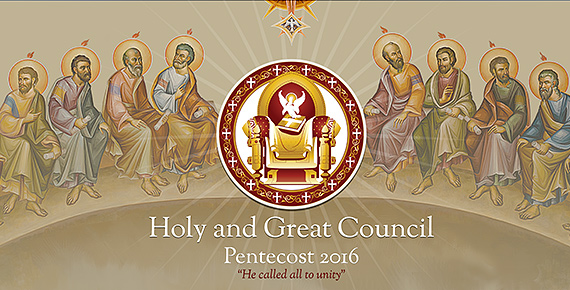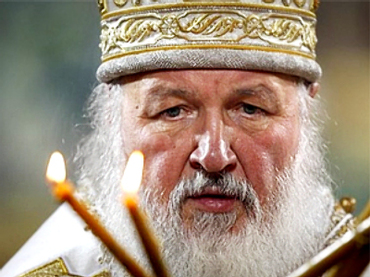The actions of certain Orthodox activists demonstrate that the Ukrainian Orthodox Church of the Moscow Patriarchate (UOC-MP) is openly working for Russia.
Not that long ago Russian television was broadcasting endless reports on the suffering inflicted on the "canonically" faithful of the UOC-MP -- actually a branch of the Russian Orthodox Church (ROC) -- in the village of Ptycha in Rivne Oblast. The Russian Orthodox delegation even made a special trip to Strasbourg to complain to the Commissioner for Human Rights in the Council of Europe about the "persecution" of the followers of "canonical" orthodoxy in Prycha and the neighboring villages. The confessional conflict in this village remains to this day.
Struggle for the faith?
The situation in Ptycha is very typical for many villages in Volyn, where there are parishes of the UOC-MP. Most of the villagers do not want to attend a church that serves the Russian invaders. And they are demanding that the churches be transferred to the Ukrainian Orthodox Church of the Kyiv Patriarchate (UOC-KP). However, the clergy, educated in the spirit of Moscow Orthodoxy, does not want to allow this. And, of course, there are groups of people around these priests who are willing to follow them. On this basis, conflicts arise between supporters of the Moscow and the Kyiv patriarchates. Often the resolution of the conflict depends on the diplomacy of the priest. If he takes a patriotic position (at least in appearance), does not mention Patriarch Kirill during services, and does not openly impose ideas of the "Russian World" on the parishioners, the situation remains relatively calm. And if not, conflict explodes.
During these conflicts in the Volyn villages, the followers of the UOC-MP who find themselves in the minority and do not want to compromise have been relying on external forces. For that purpose, they have deliberately brought in supporters of the "Russian World," who are present in sufficient numbers in Ukraine and who often are specially trained by Russia. It is these people who are responsible for inciting various provocations, which are subsequently submitted through appropriate means to the "Orthodox journalists" and Russian and pro-Russian mass media.
The "canonicals" have no use for Ukraine
For example, the Odesa resident Vasiliy Cheprazov has become one of these visiting activists in Ptycha. At one time he participated actively in the effort to create a local "Novorossiya" project in Odesa. And now, having behind him such "priceless experience," he has come to help the "canonicals" in Ptycha, where he has organized various actions and has also filmed videos of the events in the village. These videos are titled "Struggle for truth," "With God or the devil," and "Everything for the protection of Orthodoxy."
Cheprazov uses appropriate commentary, footage of specific conflict situations, and interviews with local residents and the clergy of the UOC-MP of the Rivne eparchy to promote ideas he finds useful. In these videos there are also images of supporters of the UOC-KP (they are referred to only as schismatics) and incitements to hostility toward non-Orthodox denominations. The fact that this "Orthodox activist" has sufficient funds to shoot and distribute these films is but one indication that he probably is in the service of Ukraine's northern neighbor.
It is worth noting how Ukraine and the Ukrainian state are treated in these films. The main theme is always that the Ukrainian state has no right to exist since it is not even Orthodox but Jewish. The claim that Jews are controlling Ukraine and that Ukraine's national symbols are Jewish is repeated constantly. For example, in the film "Struggle for truth" it is claimed that the Ukrainian tryzub (trident) comes from the Khazar tamgas (tribe symbols of Jewish Khazars -- Ed). In the film "With God or the devil" the tryzub is called a satanic symbol. The Ukrainian national flag is desecrated and all depictions of the flag constantly appear in negative contexts.
Ukrainian President Petro Poroshenko is not spared either. According to Cheprazov's interpretation, Poroshenko is obviously a Jew, and his Roshen company produces kosher candy that supposedly contains the blood of Christian infants. If Poroshenko ever viewed these films, he might reconsider his dealings with the "canonicals."
Additionally, Cheprazov's films claim that Ukraine is mostly inhabited by people who belong to the "Russian Orthodox people" (of the "holy Rus"). Supposedly these people also live in Russia and Belarus and must be included in one "Orthodox state." In the film "With God or the devil" there is even discussion of a future "Orthodox tsar" who will govern the entire state. The symbol of this state will be the "Orthodox symbol," the two-headed eagle which is now the emblem of the Russian Federation.
In general, the author of these films attempts to convince the viewers that the borders of Ukraine need to be destroyed along with the Ukrainian state itself. The latter needs to merge into the "Holy Rus" consisting of Russia, Belarus and Ukraine.
Of course, we could say that Cheprazov is not a priest and that he does not officially represent the UOC-- MP or the Russian Orthodox Church, that these are his own positions and beliefs, and that the majority of the faithful of the UOC--MP have different views and are even patriots of the Ukrainian state.
But is this true? Is Cheprazov's position that of a minority of the UOC--MP?
If it is a minority, then it is an aggressive minority that imposes its views quite successfully on the "canonical" believers. In Cheprazov's films ordinary parishioners and the UOC--MP clergy appear often and express their thoughts openly. Even the dean of the UOC--MP of the Dubenskyi district appears quite often. If we analyze the statements expressed by the "canonical" priests and parishioners, they create a kind of mosaic of the ideology of the "Russian World," which is presented in all its glory in these films. Of course, these people are a bit wary when speaking to the camera and try to avoid making overt anti-state statements. However, one can only imagine what ideas they express when speaking off camera. Frankly, quite a few priests of UOC--MP and the "canonical" activists engage in anti-Ukrainian and anti-state propaganda under the guise of religion.
However, Cheprazov does not limit himself simply to promoting the "Russian World" idea. His films also encourage the creation of "Orthodox self-defense units"-- experience this activist undoubtedly possesses since similar units have already been created in the "Odesa Novorossiya." It is true that this particular "creation" had tragic consequences -- a fact that probably would be of small concern to Cheprazov. The main thing for him and others like him is to promote Russian Orthodoxy at any price, including the price of blood. After all, these units of "Orthodox self-defense" have existed for a long time, especially in the "canonical" monasteries and seminaries. They have repeatedly shown up in the villages where most of the believers have demanded the transfer of their church from the UOC--MP to the UOC--KP.
Cheprazov is no exception. There are plenty of activists like him in the UOC--MP. And they have quite a few followers, including among the clergy and even the bishops. The activity of the Orthodox activists of the Cheprazov type illustrates perfectly that the UOC--MP is not only and not even much of a religious organization. It is a political organization that does not even attempt to hide the fact that it is really working for the aggressor country.
Professor Petro Kraliuk is vice-rector of the National University of Ostroh Academy and a member of the National Writer's Union of Ukraine.





